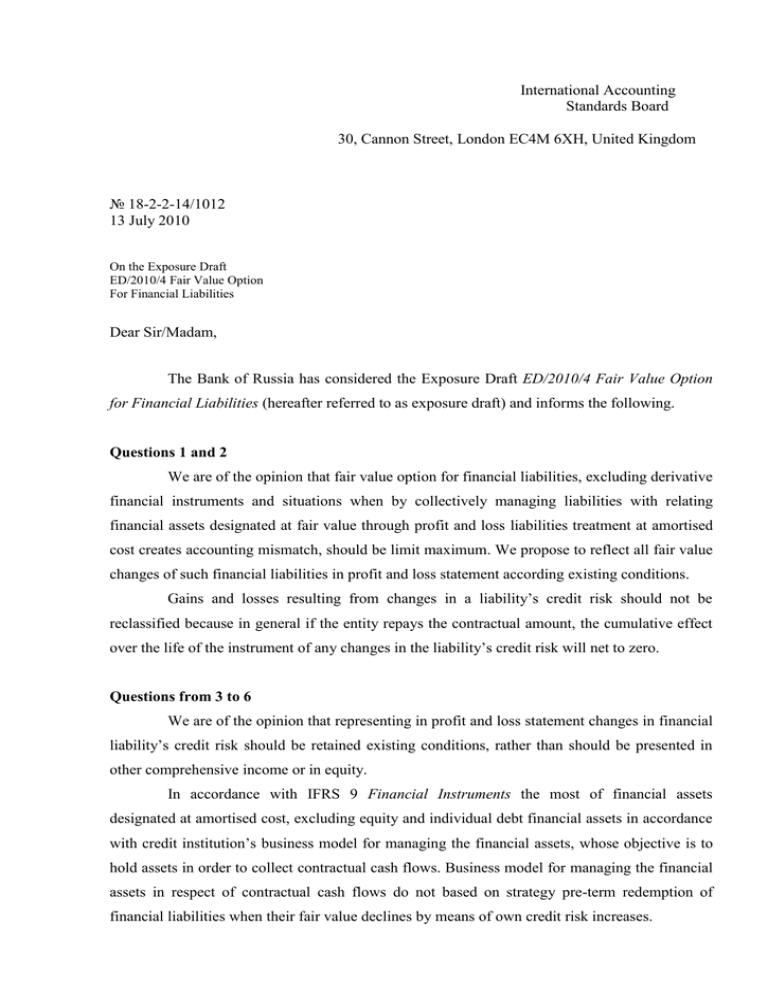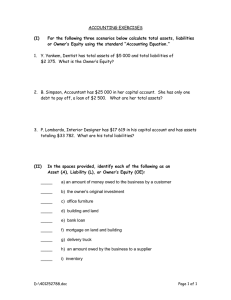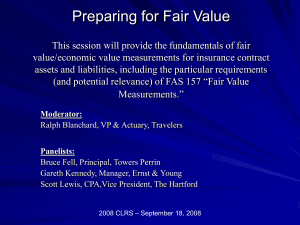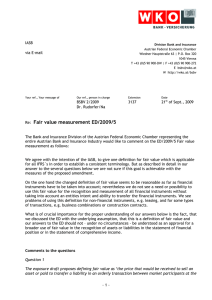International Accounting Standards Board 30, Cannon Street, London EC4M 6XH, United Kingdom
advertisement

International Accounting Standards Board 30, Cannon Street, London EC4M 6XH, United Kingdom № 18-2-2-14/1012 13 July 2010 On the Exposure Draft ED/2010/4 Fair Value Option For Financial Liabilities Dear Sir/Madam, The Bank of Russia has considered the Exposure Draft ED/2010/4 Fair Value Option for Financial Liabilities (hereafter referred to as exposure draft) and informs the following. Questions 1 and 2 We are of the opinion that fair value option for financial liabilities, excluding derivative financial instruments and situations when by collectively managing liabilities with relating financial assets designated at fair value through profit and loss liabilities treatment at amortised cost creates accounting mismatch, should be limit maximum. We propose to reflect all fair value changes of such financial liabilities in profit and loss statement according existing conditions. Gains and losses resulting from changes in a liability’s credit risk should not be reclassified because in general if the entity repays the contractual amount, the cumulative effect over the life of the instrument of any changes in the liability’s credit risk will net to zero. Questions from 3 to 6 We are of the opinion that representing in profit and loss statement changes in financial liability’s credit risk should be retained existing conditions, rather than should be presented in other comprehensive income or in equity. In accordance with IFRS 9 Financial Instruments the most of financial assets designated at amortised cost, excluding equity and individual debt financial assets in accordance with credit institution’s business model for managing the financial assets, whose objective is to hold assets in order to collect contractual cash flows. Business model for managing the financial assets in respect of contractual cash flows do not based on strategy pre-term redemption of financial liabilities when their fair value declines by means of own credit risk increases. Question 7 Gains and losses resulting from changes in a liability’s credit risk should not be reclassified because in general if the entity repays the contractual amount, the cumulative effect over the life of the instrument of any changes in the liability’s credit risk will net to zero. We are of the opinion that representing in profit and loss statement changes in financial liability’s credit risk should be retained existing conditions, rather than should be presented in other comprehensive income or in equity. Question 8 We agree with the statement that guidance in IFRS 7 should be used for determining the amount of the change in fair value that is attributable to changes in liability’s credit risk and for presenting information in profit and loss statement. Question 9 We agree with IASB’s opinion that if entity elects to apply these amends early, preparers of financial statements must at the same time apply any already published requirements in IFRS 9 Financial instruments that it does not already apply (paragraph 4 of the exposure draft). Alternatively it can lead to incomparability information among entities. Question 10 We are of the opinion that representing in profit and loss statement changes in financial liability’s credit risk should be retained existing conditions, rather than should be presented in other comprehensive income or in equity. We propose to consider the possibility following up dynamic of changes in liability’s credit risk through disclosures in financial statements in paragraph 10 IFRS 7 Financial instruments: Disclosures. Yours sincerely, R. Erohina Acting Chief Accountant of the Bank of Russia – Director of the Accounting and Reporting Department 2






